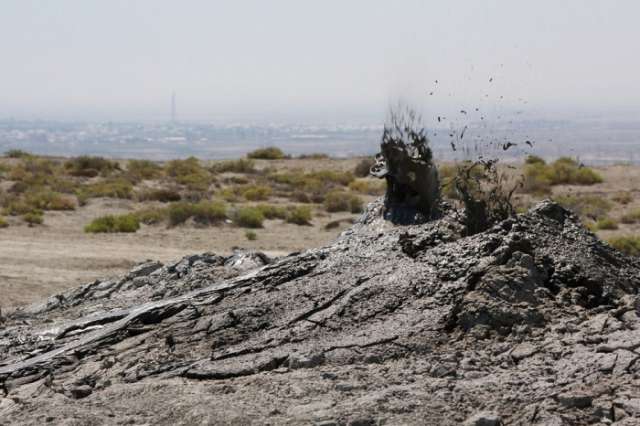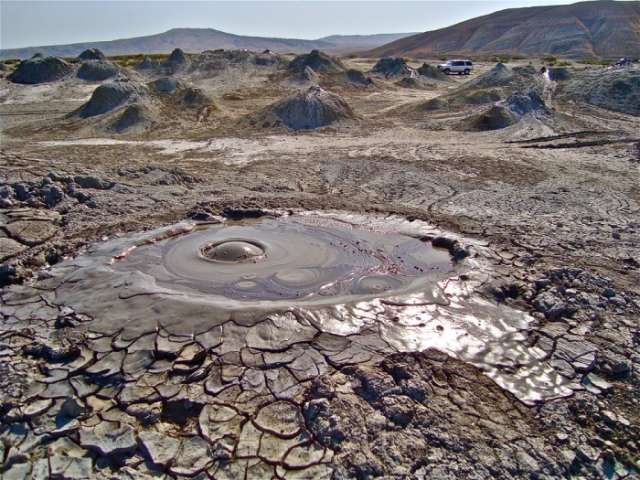“It looked as though an animal was trying to get out of the ground […] There was a big explosion, and a huge flame started coming from the hillside […] The flame was unbelievably big, about three hundred meters high. It was surrounded by dense, black smoke, and lots of mud was being thrown into the air,” recounted a local. Visible from 15 kilometers (nine miles) away, three days later the flames were still burning.
What had taken place was an eruption, not one of magma, but of mud. Known as “mud volcanoes,” they form in places where pockets of underground gas have found a weak spot in the earth where they can force their way to the surface. Because they are not caused by magma, the mud volcanoes, rather than being hot, can be very cold indeed, often just above freezing. Over a thousand mud volcanoes are known to exist in the world, and some 400 of those are in the coastal area of Azerbaijan.
While mud volcanoes (also known as “sedimentary volcanoes”) never grow to the size of a normal volcano, topping out at around 10 km in diameter and 700 meters in height, (among the largest mud volcanoes in the world are Boyuk Khanizadagh and Turaghai, both in Azerbaijan) they do occasionally get the chance to show off, as happened in 2001.
Every 20 years or so, one of these mud/gas volcanoes will ignite deep below the surface and create a massive explosion. While generally not dangerous to people, as they are far outside of most city centers, it is believed that six shepherds and over 2,000 sheep were killed by a mud volcano in Bozdagh, Azerbaijan.
There is a silver lining to having a country covered in mud volcanoes. Mud volcanoes are closely associated with hydrocarbon and petrochemical stores underground, hence the gas trying to escape to the surface. A few of these gas leaks are constantly on fire, shooting small perpetual flames into the air and some believe that these perpetual flames are strongly connected to the appearance of the Zoroastrian religion in Azerbaijan some 2,000 years ago.



/Atlasobscura/
More about: #MudVolcanoes #Azerbaijan
















































